Origami, the ancient Japanese art of paper folding, is a captivating craft that spans centuries and cultures. At its core, origami is about transforming a single sheet of paper into intricate shapes without the use of scissors or glue.
Within this elegant art form lies a treasure trove of traditional shapes, each steeped in cultural significance. These time-honored designs, like the graceful crane symbolizing peace or the resilient koi fish representing luck, transcend mere paper and folds.
They embody profound meanings, tying together history, culture, and artistic expression. In this exploration, we’ll delve into the enchanting world of traditional origami shapes, where each crease tells a story.
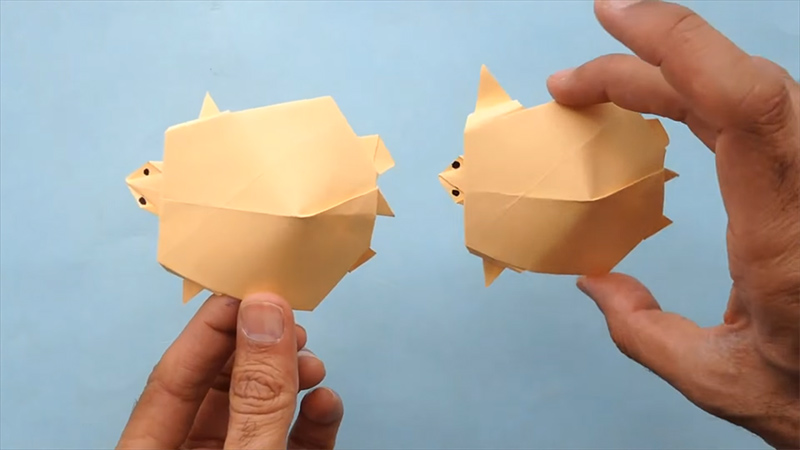
What Origami Shapes Are Traditional?
Origami, the art of paper folding, has a rich and diverse history spanning centuries and cultures. Traditional origami shapes are a fundamental part of this art form, often representing cultural symbols, animals, and objects of significance.
These shapes are typically created using a single square sheet of paper, without cutting or gluing, and rely solely on the intricate folding techniques passed down through generations.
Here are the 10 most popular traditional origami shapes from various cultures:
1. Crane (Tsuru)
The crane, or “Tsuru” in Japanese, is not only a symbol of peace and longevity but also a representation of hope and healing.
It holds a special place in Japanese culture due to its association with the story of Sadako Sasaki, a young girl who folded cranes while battling leukemia as a result of the Hiroshima bombing.
The “1,000 cranes” tradition is deeply rooted in the belief that folding 1,000 paper cranes can grant a wish or bring healing.
2. Samurai Helmet (Kabuto)
The origami kabuto reflects the rich history of the samurai warrior class in Japan. During Children’s Day (Kodomo no Hi), families often display a kabuto alongside other traditional items to wish for their children’s health, strength, and success in life.
3. Frog (Kermit the Frog)
The origami frog is a whimsical and playful design, making it a favorite among children and beginners. Its simple yet interactive folding sequence allows the frog to “jump” when pressed on its back, adding an element of fun to the traditional art of origami.
4. Dragon (Ryujin)
The origami dragon is a masterful creation that requires intricate folds and advanced techniques. In Chinese culture, dragons symbolize power, strength, and good fortune.
Origami artists who take on the challenge of crafting a dragon often invest a considerable amount of time and skill in their work.
5. Lotus Flower
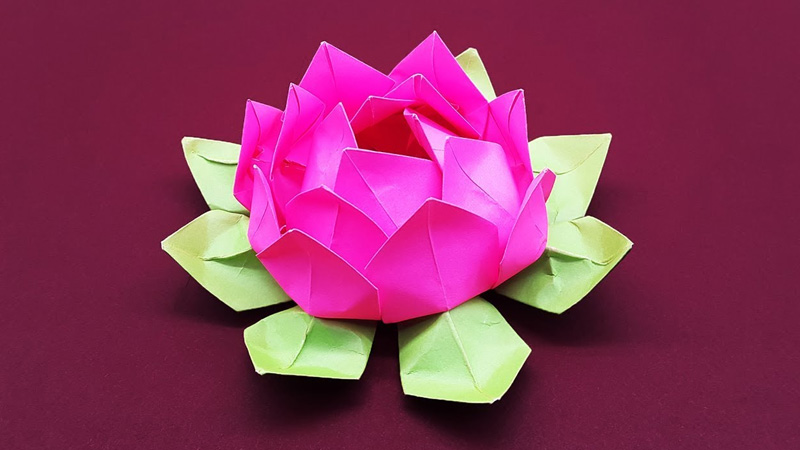
The lotus flower holds deep spiritual significance in many Asian religions. It is a symbol of purity, enlightenment, and the journey from darkness to light.
Origami lotus flowers are crafted with great attention to detail, with each layer of petals representing a stage of enlightenment.
6. Fish (Koi)
Koi fish are renowned for their vibrant colors and patterns, and this beauty is captured in origami form.
In Japanese culture, the koi represents perseverance and determination, as it is believed that koi can swim upstream against strong currents and waterfalls.
Origami koi fish are often folded using colored paper to mimic the stunning appearance of real koi.
7. Butterfly
Butterflies are admired for their delicate beauty and graceful flight. In origami, there are various butterfly designs, each with its own charm.
They symbolize transformation, metamorphosis, and the fleeting nature of life, making them a poignant choice for origami artists and enthusiasts.
8. Star (Lucky Star)

Origami lucky stars are small, intricate creations that are often made in batches and stored in decorative jars.
They are given as tokens of good luck, making them a popular choice for gifts. Folding lucky stars requires patience and precision to create the tiny, puffed-up shapes.
9. Boat (Sailing Ship)
The origami boat represents journeys, both physical and metaphorical. It can symbolize setting sail toward new adventures or hopes for a safe voyage. The simplicity of this design makes it accessible to origami enthusiasts of all levels.
10. Heart
Origami hearts come in various forms, from simple flat hearts to three-dimensional, pop-up designs. These hearts symbolize love, affection, and romantic feelings.
They are frequently used as decorations on cards, in scrapbooking, and as heartfelt gifts on special occasions like Valentine’s Day.
What Origami Shapes Are Traditional for Beginners?
Traditional origami shapes that are well-suited for beginners often include simple, iconic designs that are easy to learn and fold.
These shapes provide an excellent introduction to the art of paper folding and help beginners build their foundational skills.
Here are some traditional origami shapes that are great for beginners:
Paper Crane (Tsuru)
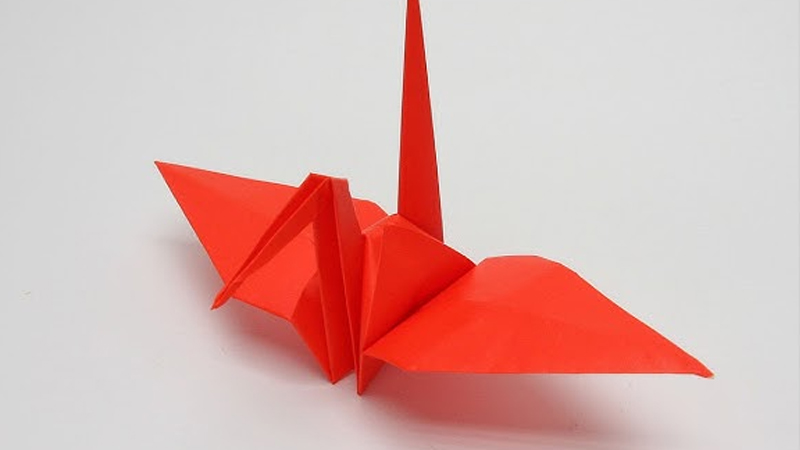
The paper crane, or “Tsuru” in Japanese, is one of the classic origami shapes known for its elegance and symbolism. Folding a crane is a great way for beginners to learn foundational origami techniques like valley and mountain folds.
According to Japanese tradition, folding 1,000 paper cranes grants a wish or brings good luck, making this an engaging and meaningful project for beginners.
Boat
Origami boats are one of the simplest shapes to fold and are often used in various origami stories and settings.
Beginners can quickly grasp the basic folds required to create a boat, making it an ideal introduction to the world of origami. These boats can be placed in water or used as decorative pieces.
Heart
The origami heart is a delightful shape, perfect for expressing love and affection. It involves straightforward folds and can be easily personalized with different colors and patterns.
Beginners can fold hearts for Valentine’s Day, anniversaries, or simply as heartfelt tokens to share with loved ones.
Fish (Koi)
Origami fish, particularly the koi fish, represent good luck and determination in Japanese culture.
The simple folds needed to create a fish make it accessible for beginners. It’s a charming design that can be used as decoration or as part of origami displays.
Cup
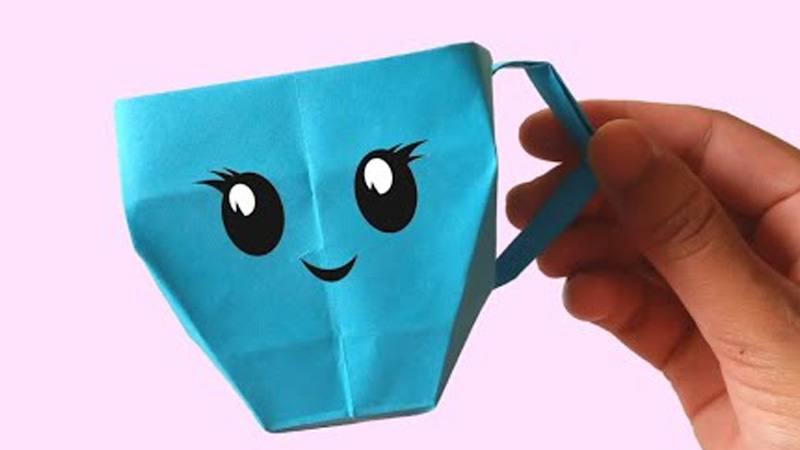
Origami cups or boxes are excellent for teaching beginners the concept of inside reverse folds. These basic shapes can be used as containers for small items or as a foundation for more complex origami projects. They offer practice in precision folding.
Samurai Helmet (Kabuto)
The origami samurai helmet, associated with Children’s Day in Japan, is a fun and symbolic shape that represents strength and protection.
Its relatively straightforward folds make it suitable for beginners, especially children who can enjoy decorating their folded helmets.
Bookmarks
Origami bookmarks are practical and versatile. Beginners can fold these simple shapes and customize them with their favorite colors and patterns. They serve as functional origami creations that make reading more enjoyable.
Plane
Origami planes are great for beginners, especially kids who can fold and decorate their own paper airplanes. After folding, these planes can be flown, offering an interactive element to the origami experience.
Dog
Basic origami dog designs are approachable for beginners and can be used as a starting point for more complex animal folds. These simple dogs are fun to fold and can be enjoyed by both children and adults.
Cat
Like the origami dog, basic origami cat designs are beginner-friendly and provide an opportunity to practice basic folding techniques. These folded felines can be used for decoration or as part of origami dioramas and displays.
Traditional Origami vs Modern Origami -The Differences
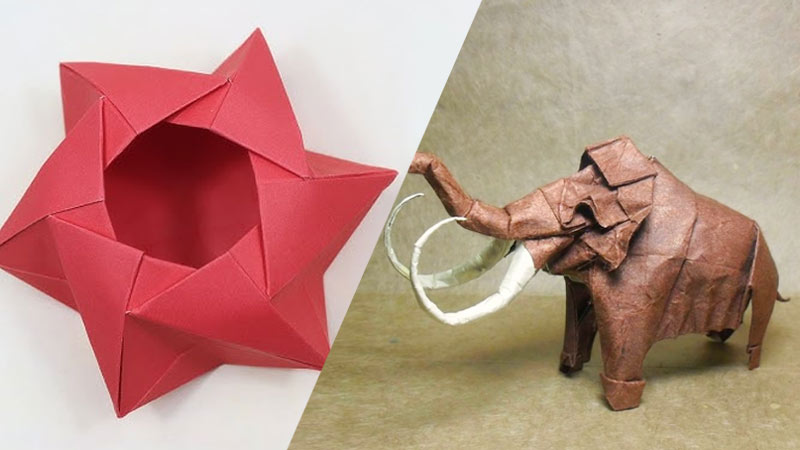
Traditional Origami and Modern Origami are two distinct approaches within the art of paper folding, each with its own characteristics, history, and techniques.
Here’s a comparison of Traditional Origami and Modern Origami:
Origami Materials
- Traditional Origami: In traditional origami, the primary material used is a single square sheet of paper. The emphasis is on folding techniques, precision, and making the most of the paper’s inherent qualities, such as color and texture. Traditional origami strictly adheres to the “no cuts, no glue” rule, focusing solely on the art of folding.
- Modern Origami: Modern origami often expands beyond traditional paper, incorporating various materials such as foil paper, tissue paper, and even non-paper elements like fabric or metal.
Artists may use cutting and gluing techniques to create complex and unconventional origami sculptures. This versatility in materials and techniques allows for greater experimentation and innovation.
Origami Complexity
- Traditional Origami: Traditional origami designs typically feature relatively simple folding sequences and shapes. While they may vary in complexity, many traditional models are accessible to beginners and intermediate folders. The challenge in traditional origami lies in achieving precision and elegance in the folds.
- Modern Origami: Modern origami frequently explores complex and intricate designs. Artists push the boundaries of what can be achieved with paper, creating intricate tessellations, modular constructions, and elaborate geometric patterns. These advanced creations often require a deep understanding of mathematical and folding principles.
Origami Community
- Traditional Origami: The traditional origami community has a strong focus on preserving and passing down cultural traditions and techniques.
There are organizations, conventions, and gatherings where enthusiasts come together to learn, share, and celebrate the art form. Mastering traditional designs is often a rite of passage in this community. - Modern Origami: The modern origami community is characterized by a more diverse and global perspective.
It welcomes innovation and individual creativity, encouraging artists to explore new possibilities and share their unique designs online and in art exhibitions. Collaboration and cross-pollination of ideas are common in this community.
Origami Purpose
- Traditional Origami: In traditional origami, the purpose is often deeply rooted in cultural and ceremonial contexts. Traditional designs are used for religious rituals, celebrations, and symbolic gestures. They have a strong connection to storytelling and folklore.
- Modern Origami: Modern origami can serve a wide range of purposes, including fine art, sculpture, decoration, and even practical applications like origami engineering.
While some modern pieces may carry artistic or conceptual meaning, they are often created for artistic exploration and personal expression.
FAQS
Are traditional origami shapes limited to specific countries or cultures?
No, traditional origami shapes are found in various cultures worldwide, each with its own unique designs and symbolism.
Are there traditional origami shapes that are considered sacred or religious?
Yes, some traditional origami shapes are associated with religious or spiritual significance.
Are there any contemporary twists on traditional origami shapes?
Yes, contemporary origami artists often reinterpret traditional shapes or combine them with modern artistic elements.
What is an origami water bomb?
An origami water bomb is a simple origami shape used for various craft projects and even as a base for other origami creations.
What is an origami fish base?
An origami fish base is a fundamental folding technique used as a starting point for various origami models, including fish, birds, and other creatures.
What are some common origami shapes used in everyday life?
Common origami shapes that you might encounter in everyday life include the paper airplane, origami fortune teller (also known as a cootie catcher), and origami bookmarks.
To Recap
Traditional origami shapes are not just folded paper creations; they are vessels of culture, history, and symbolism. Across centuries and continents, these intricate designs have carried profound meanings and stories.
From the graceful cranes of Japan that symbolize peace and longevity to the dragon of China representing power and courage, each fold is a testament to human creativity and the universal desire to imbue art with significance.
Through the simple act of folding paper, origami connects us to our shared human heritage and invites us to explore the depths of cultural expression.
So, the next time you fold a traditional origami shape, remember that you’re not just creating art; you’re preserving a timeless tradition that transcends borders and speaks to the heart of our shared human experience.
Leave a Reply